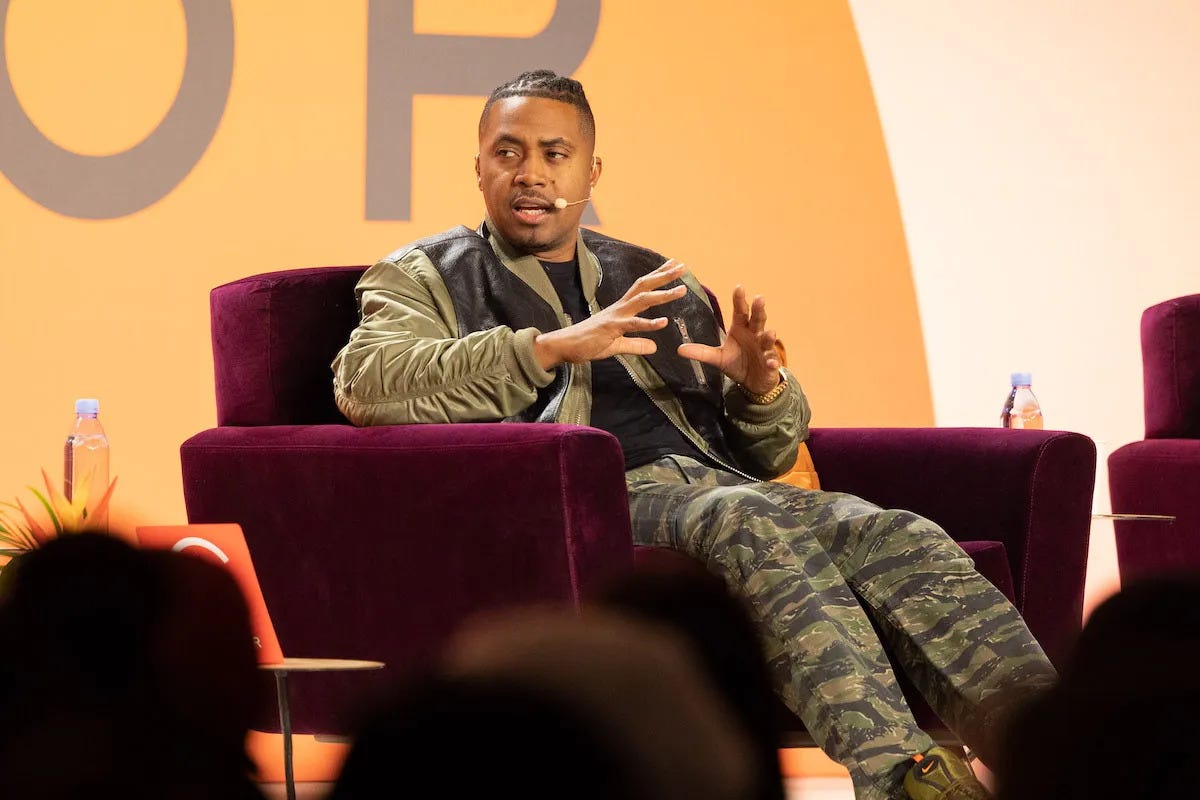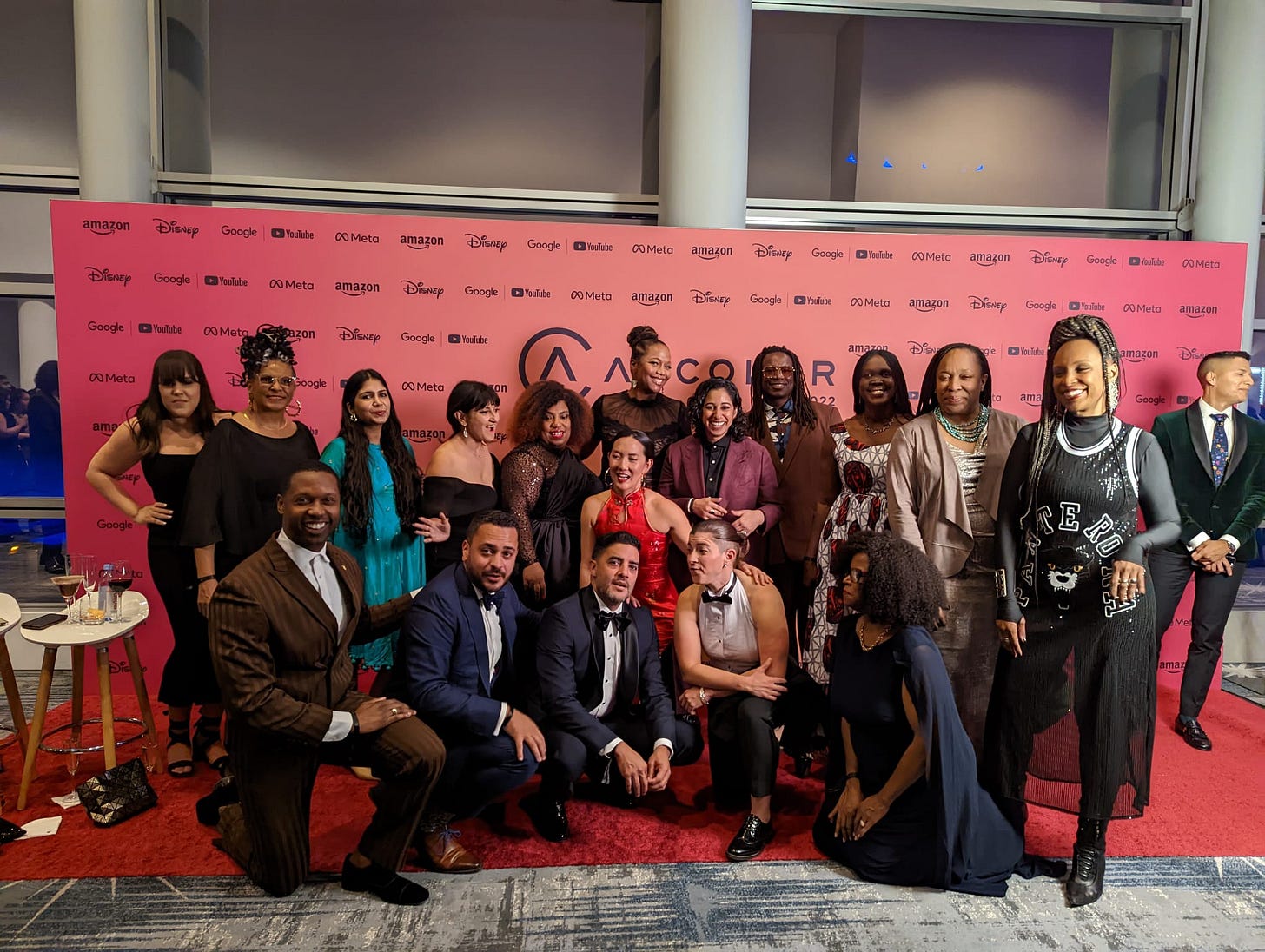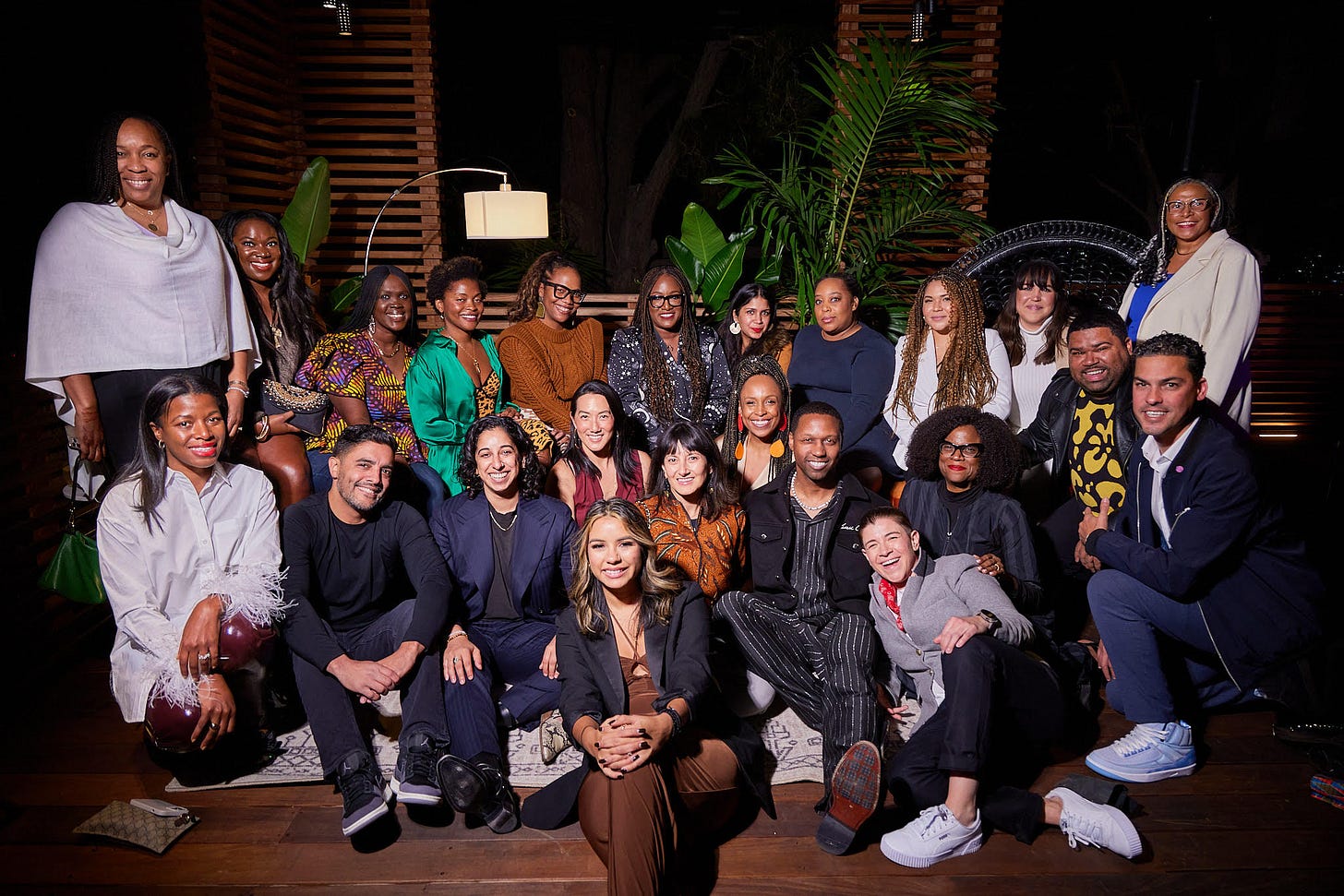A month ago, I participated in the AdColor Conference for the first time .For those not in the know, AdColor is the biggest conference focused on diversity, equity and inclusion in creative industries. It was started 16 years ago by Sony’s Chief Diversity Officer Tiffany R. Warren, an ad exec at the time, who built it from an agency conference to the premier meeting ground of diversity in the world of creativity and entertainment. It was intoxicating to be back in conference mode, inundated with new people and new knowledge. The experiences have been percolating through my blood over the last month, and I wanted to share a few here.
The next gen of leadership
I was fortunate enough to join an inaugural program called AdColor Leaders, curated by AdColor and Google, with 30 leaders in creative industries. We spent two days listening to ad luminaries like Jimmy Smith and Tiffany Warren herself, academics like Dr. Tsedale Melaku, and artists like Reggie Black and poet Dr. Sana Ahsan.
One of the most impactful parts of our many discussions was the recontextualizing and unpacking what it means to lead through a generational transformation of values.
TikTok hosts endless rabbit holes about generational differences in the workplace, but the truth is that the generational expectations about work, and the environments of the work place are radically different. Each generation brings with them the baggage of how they came up at work, how their bosses treated them, and how systems lifted them out and held them back. The generations in leadership positions now started careers 20 or 30 years ago predated the constant barrage of Slack messages and LinkedIn updates. Their mental models of who got to the C-suite wee white and male and very heteronormative. #MeToo was unimaginable. The civil rights marches of the 60s were closer than the protests following George Floyd.
Those in their 20s now are built different. They’ve grown up with more equality than any prior generation, and also more technology and anxiety. They’ve entered the job market in pandemic highs and lows. Translating between these two radically different generations, breaking down the old, and birthing the new is the work many of us in mid-career are doing.
So how do we live into the next generation?
Nas + the history of rap
For nearly half a century, hip hop has been the soundtrack of life--teenage drives, TikTok dances, Summer barbecues, social movements and so much more. It grew out of the cracks of the Bronx sidewalks, and turned Black culture into a Juggernaut. It launched the first Black billionaires, changed language, and changed the world forever. Nas’s music was a big part of that for me. I learned to drive to Illmatic. We played The World Is Yours at our wedding. And when he walked out on stage, he made another moment of life. He spoke with Ryan Ford, the President of Cashmere agency and Peter Bittenbender, the CEO of Mass Appeal, about his background with rap and the launch of the Museum of Rap in the Bronx. Hearing Nas talk about his life with rap, from watching the first hip hop videos on public access TV to his albums, to investing in the memorialization of hip hop through the museum. Seeing him speak was a reminder that a whole new form of culture, with all its creativity, business and power, has arisen and shaped the world in its favor.
Issa Rae + owning your ecosystem
Issa Rae, who was honored with AdColor’s annual Beacon award, closed the conference with an interview with AdColor founder Tiffany Warren. When she stepped on stage in a powder blue pant suit, the crowd lit up. She represented so much, a Black woman who had built an empire of content from a YouTube channel to an empire of content, and the audience responded in kind. She shared how she built a content ecosystem that reflects what she wants to see in the world. This doesn’t just mean Black women in front of the camera; it means Black women behind the camera. We also heard from people like Jayda Imanlihen from Black Girl Film School, which trains young Black women to play roles from directors of photography to key grips; having an ecosystem is powered by having a pipeline of talent.
The power of style
Conference details include the dress code of business casual, and I packed what I typically pack for conferences -- some dresses and heels with a little color and flair. But this was no typical business casual. Every iteration of Telfar bag imaginable. Jordan 1s and 2s in color combinations from classic to fantastical. Full body sweatsuits in velour. Hot pink pantsuits. Box braids, Afros, platinum and purple hair. Statement manicures on point.
Conference presenters gazed out from the stage, and so many remarked on the beauty of the audience. This beauty came from showing up and showing out, but also from seeing vast crowds of people that looked like them, all part of a grander network of change.
More than one presenter talked about the transformational feeling of owning how you look. Changing the style of leadership isn’t just about who leads, how we lead, but also how we shift the perception of who gets to lead. Whether it’s skin color, hair style, or gear that represents your culture, owning your look with pride reframes what leaders look like.
Research shows an ongoing bias towards whiteness in perceptions of leadership, but. being surrounded by powerful people of color owning stages and careers, businesses and missions, is the best reminder that no matter what you look like, there’s a place for you at the top.
You’ve just read Framing, a regular newsletter about what’s good culture, marketing, and business by Anita Schillhorn van Veen. I’m Director of Strategy at McKinney, on the lead team of Ladies Who Strategize, and a writer over at my other favorite Substack Why Is This Interesting.
I write this newsletter and distribute it freely because I enjoy writing and thinking through problems—if you enjoyed this, buy me a coffee or subscribe below.








